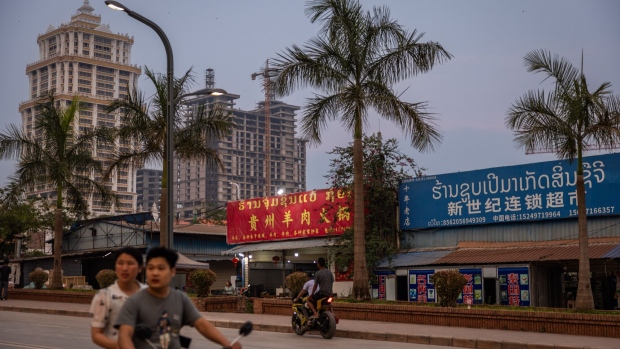Jul 1, 2024
Debt-Saddled Laos Turns to Deferrals as Repayments Nearly Double
, Bloomberg News

(Bloomberg) -- Laos’ external debt payments last year nearly doubled to $950 million, prompting the Southeast Asian nation to seek additional deferrals to avoid defaulting on debt that exceeds economic output, according to a government report.
External debt repayments jumped from $507 million in 2022, based on a Ministry of Finance report published on Friday. That led Laos to defer $670 million in principal and interest payments in 2023, adding to an estimated $1.22 billion of obligations postponed since 2020, according to government data.
“Laos will continue to negotiate with key creditors to defer (or rollover) the existing debt stock and debt service, which would improve liquidity and lessen pressures on debt service,” it said in the report, underscoring the government’s intention to manage its obligations.
International finance institutions and credit ratings agencies have warned that the debt burden puts the nation of nearly 8 million at high risk of default amid liquidity issues. Moody’s Ratings said in February that Laos’ challenges are “compounded by weak governance indicating that debt management is not strong enough to anticipate changes in the financing environment.”
Laos had $13.8 billion in total public and publicly-guaranteed debt at the end of last year, down just 1% from year before and amounting to 108% of its gross domestic product. About half of Laos’ $10.5 billion in external government debt is owed to China, preliminary data show.
The government aims to reduce the public debt to GDP ratio by about 5 percentage points by 2025 to 89% from 94% last year as it seeks to boost revenue, curb borrowings and spending. It expects obligations to remain high in the next five years, with annual external debt service estimated at about $1.3 billion between 2024 and 2028.
There are other domestic concerns, including currency depreciation, in a country where 59% of total external debt are in US dollars. Its currency — the kip — weakened by 31% against the dollar last year, with headline inflation growing at a comparable rate, the World Bank said in April. Further decline of the kip will make it harder to service its debt.
As for the deferral of debt owed to China amounting to about $2 billion or over 15% of GDP last year, the World Bank previously said that the move “provided temporary relief between 2020 and 2023.”
Still, residual interest and principal payments amounted to 5% of GDP in 2023. “The outcome of ongoing bilateral debt negotiations will have significant implications for both debt sustainability and macroeconomic stability,” the World Bank said.
©2024 Bloomberg L.P.






